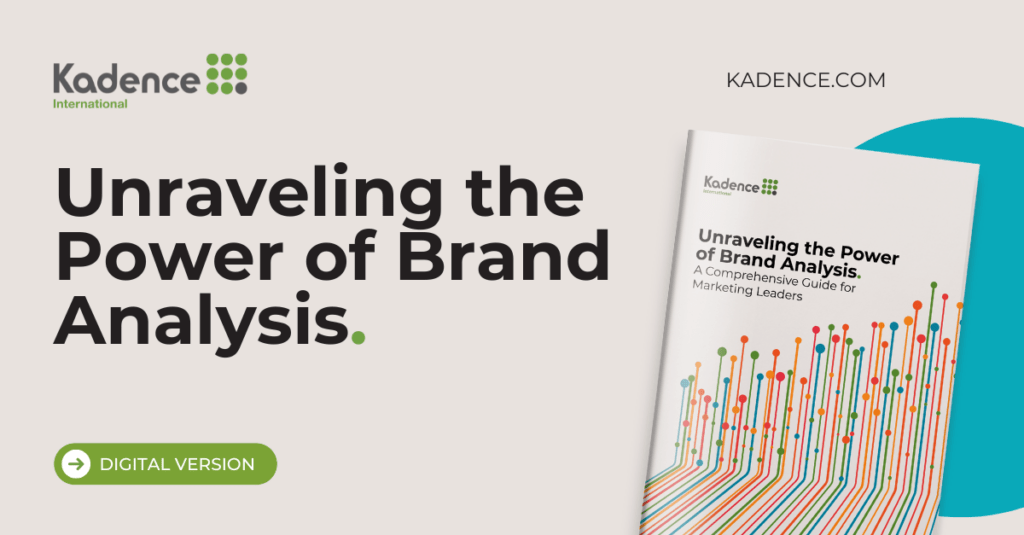During the highly anticipated Super Bowl XLV, Volkswagen aired an ad that would become one of the most iconic commercials in recent memory. “The Force,” featuring a young boy dressed as Darth Vader, captured the hearts of millions with its clever blend of humor, nostalgia, and a simple yet powerful demonstration of the car’s remote start feature. The ad didn’t just entertain; it left a lasting impression that resonated far beyond the game itself, becoming a benchmark for effective brand recall.
Image credit: Volkswagon
This is the essence of brand recall—moving beyond mere recognition to become the brand consumers remember and discuss. For brand leaders, this measure is essential in determining a brand’s market position and the true impact of its marketing campaigns.
However, the challenge lies in replicating this success across diverse international markets. Cultural differences, economic conditions, and varying levels of brand familiarity can all influence how consumers perceive and remember brands. In such varied landscapes, a uniform approach to measuring brand recall risks delivering unreliable insights, potentially leading to misguided strategies.
Understanding Brand Recall: Definition and Importance
Brand recall is a critical indicator of a brand’s presence in consumers’ minds. It goes beyond mere recognition, measuring whether a brand naturally comes to mind when consumers think about a particular product category. This metric is vital for assessing how deeply a brand has embedded itself into consumer consciousness, providing a clear measure of its market strength.
One notable example of effective brand recall measurement comes from Coca-Cola in India. Faced with strong local competition, such as Thums Up, Coca-Cola needed to understand how well its brand was being recalled in a market where consumer preferences were deeply tied to local brands. By conducting extensive brand recall studies, Coca-Cola identified that while its brand was recognized, it lacked the emotional connection that local competitors had cultivated over the years.
Image credit” Coca Cola India
In response, Coca-Cola launched the “Thanda Matlab Coca-Cola” campaign, which cleverly tied the brand to a common Hindi expression: “Cold means Coca-Cola.” This campaign resonated with Indian consumers on a cultural level, significantly boosting Coca-Cola’s brand recall and helping the brand establish a stronger presence in a market dominated by local favorites.
Techniques for Measuring Brand Recall Across Markets
Effectively measuring brand recall in diverse markets requires a nuanced approach. Standard methods like aided and unaided recall surveys, brand recognition tests, and tracking studies form the foundation, but their application must be carefully adapted to account for regional variations.
Aided recall surveys, where respondents are prompted with a brand name and asked if they remember it, provide a direct measure of brand awareness. Unaided recall, on the other hand, challenges respondents to recall a brand without any prompts, offering deeper insights into a brand’s top-of-mind presence. Brand recognition tests add another layer, measuring whether consumers can identify a brand when presented with logos or packaging. Tracking studies, which monitor brand recall over time, are invaluable for understanding how a brand’s presence evolves in different markets.
| Step | Details |
| 1. Conduct Surveys or Studies | Use Aided Recall (prompt with product category) and Unaided Recall (no prompt) surveys to gather data. |
| 2. Calculate Brand Recall Rate | Aided Recall Rate: (Number of respondents who recall the brand / Total number of respondents) x 100Unaided Recall Rate: (Number of respondents who mention the brand without prompt / Total number of respondents) x 100 |
| 3. Analyze Results | Compare recall rates across demographics, regions, or time. Assess influencing factors like advertising and market presence. |
| 4. Benchmark Against Competitors | Compare your brand’s recall rate with competitors to understand your market position. |
| 5. Refine Marketing Strategies | Use insights to adjust marketing strategies, ensuring your brand remains top-of-mind in key markets. |
However, applying these techniques without considering local nuances can produce skewed results. For example, cultural differences can influence how consumers respond to recall surveys, with some markets exhibiting higher levels of modesty or reluctance to express familiarity with brands. In contrast, others may display more assertive responses.
To ensure accuracy, brand recall studies should be tailored to each region’s specific cultural and market conditions. In markets where consumers may be less inclined to openly express brand familiarity, adjusting survey language to be more inclusive or neutral can yield more reliable data. Additionally, using culturally relevant examples or references in brand recognition tests can enhance the validity of responses.
Practical tips for designing brand recall studies in diverse markets include:
- Localizing Survey Content: Ensure that the language, examples, and references used in surveys are culturally appropriate and resonate with the target audience.
- Considering Response Bias: Consider how cultural attitudes may affect responses and adjust the survey design to mitigate potential biases.
- Leveraging Technology: Utilize mobile research platforms and online surveys that are accessible to consumers in different regions, allowing for broader reach and more representative samples.
- Conducting Pilot Studies: Before rolling out full-scale brand recall studies, consider conducting pilot studies in key markets to identify cultural or regional challenges that may affect results.
The Role of Technology in Measuring Brand Recall Globally
Technology plays a pivotal role in measuring brand recall across multiple markets. Traditional methods often fail to capture the complexities and nuances of global consumer behavior. Leveraging digital tools like online surveys, social media analytics, and mobile research platforms allows brands to reach diverse audiences and gather real-time insights that are both contemporary and precise.
Online surveys offer a flexible and cost-effective way to measure brand recall across different regions. They can be easily localized, allowing for adjustments in language and cultural references to ensure relevance in each market. Moreover, online surveys can be distributed quickly, enabling brands to collect data from large, geographically dispersed samples within a short time frame.
Social media analytics provide another powerful tool for measuring brand recall. By analyzing conversations, mentions, and hashtags related to a brand, companies can gain insights into how frequently consumers recall and discuss their brand. This method captures spontaneous brand recall and offers a window into the sentiment and context surrounding brand mentions. Social media platforms also allow for segmentation by region, helping brands understand recall dynamics in specific markets.
Mobile research platforms take the power of recall measurement to the next level by reaching consumers where they spend a significant amount of time—on their smartphones. These platforms enable brands to conduct surveys, polls, and even interactive recall tests directly on mobile devices, providing immediate feedback and high engagement rates. Given the widespread adoption of mobile technology, especially in emerging markets, mobile research offers unparalleled access to a broad and diverse audience.
Interpreting Brand Recall Data in Diverse Markets
Interpreting brand recall data is not just about understanding numbers; it’s about placing those numbers within the context of each market’s unique cultural, economic, and competitive environment. A brand that enjoys high recall in one market may struggle in another, and the reasons for these differences often lie beneath the surface of the data.
Cultural factors play a significant role in how consumers recall brands. For example, in markets where collectivist values are strong, like Southeast Asia, brand recall may be influenced by market or community endorsements rather than individual experiences.
Economic conditions also shape brand recall, with consumers in higher-income markets likely to recall premium brands more readily. At the same time, those in lower-income regions may have a stronger recall for value-oriented brands.
Understanding the competitive landscape is equally important. In markets saturated with local brands, international brands may struggle to achieve the same level of recall. Conversely, in regions with few dominant players, newer brands might find it easier to carve out a space in consumers’ minds.
Businesses must interpret brand recall data with these factors in mind, using the insights to guide their brand strategy and marketing efforts. A one-size-fits-all approach will not suffice; brands need to adapt their strategies to resonate with the local context.
Consider the case of Unilever in Indonesia. Unilever’s Lifebuoy soap faced significant challenges in Indonesia, where local competitors and culturally ingrained habits posed obstacles to establishing brand recall. To address this, Unilever undertook extensive brand recall studies to understand how Indonesian consumers perceived personal hygiene and health products.
Image credit: Unilever
The data revealed that while Lifebuoy was recognized, it was not top-of-mind for many consumers when considering health and hygiene, particularly in rural areas where traditional practices dominated. Unilever launched a campaign focused on educating consumers about the importance of handwashing with soap, tying Lifebuoy directly to the health and well-being of families.
The campaign, which included the “School of Five” program promoting handwashing in schools, was highly localized, using culturally relevant messaging and community involvement. This strategy not only improved brand recall but also positioned Lifebuoy as a public health champion in Indonesia, significantly increasing its market share in urban and rural areas.
A Strategic Imperative: Mastering Brand Recall Across Markets
Understanding and measuring brand recall across diverse international markets is not just a metric—it’s a strategic imperative. For global brands, it offers a window into how well they are penetrating the minds of consumers in various regions, providing insights that can shape everything from marketing campaigns to product positioning.
However, the complexities of diverse markets demand more than a superficial approach. Brands must go beyond traditional methods, employing technology and cultural insights to ensure their recall data is accurate and actionable. The ability to interpret this data within the specific market context separates successful brands from those that fail to connect.
Investing in comprehensive brand recall measurement techniques is no longer optional. It’s necessary for any business looking to understand its global impact and refine its strategies to meet the needs of consumers in different regions. The future of brand success lies in the depth of understanding—knowing not just that your brand is recalled but why, how, and in what context. In an increasingly competitive global market, mastering brand recall is mastering the market itself.
Get regular insights
Keep up to date with the latest insights from our research as well as all our company news in our free monthly newsletter.





 Senior Marketing Executive
Senior Marketing Executive Sales & Marketing
Sales & Marketing General Manager PR -Internal Communications & Government Affairs
General Manager PR -Internal Communications & Government Affairs Vital Strategies
Vital Strategies
 Customer Intelligence Director
Customer Intelligence Director